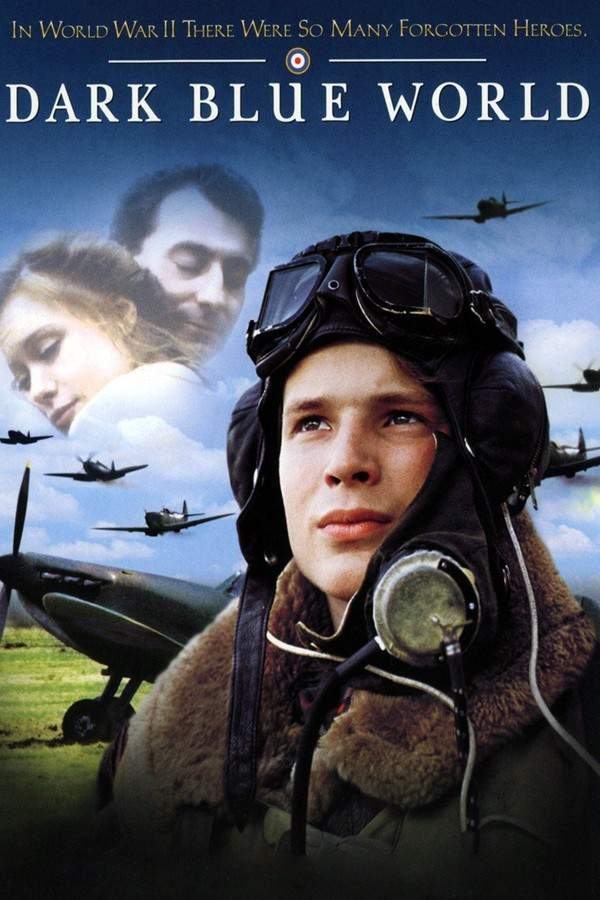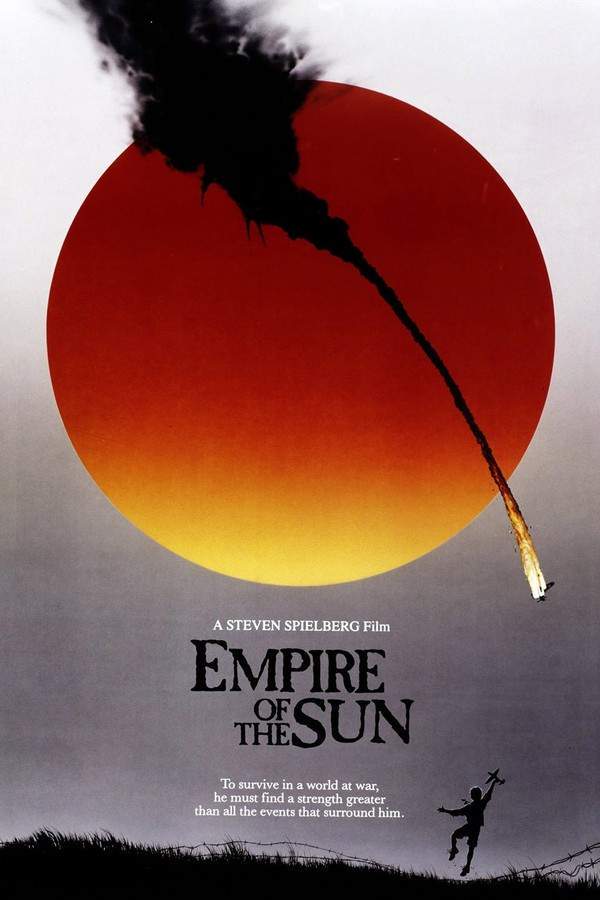
Purple Sunset
Year: 2001
Runtime: 107 mins
Language: Chinese
Director: Feng Xiaoning
In the waning days of World II, a Soviet Russian female officer, a humble Chinese peasant and a Japanese schoolgirl find themselves stranded together in a dense forest. Forced to trek toward safety, they must navigate the treacherous terrain while wrestling with deep mutual distrust born of their nations’ conflict.
Warning: spoilers below!
Haven’t seen Purple Sunset yet? This summary contains major spoilers. Bookmark the page, watch the movie, and come back for the full breakdown. If you're ready, scroll on and relive the story!
Purple Sunset (2001) – Full Plot Summary & Ending Explained
Read the complete plot breakdown of Purple Sunset (2001), including all key story events, major twists, and the ending explained in detail. Discover what really happened—and what it all means.
In 2000, Yang, an elderly Chinese man, sits with a journalist who invites him to talk about the war that shaped his life. The old man clutches a quaint okiagari-koboshi musical doll, and as he touches it, his memories surge back to the late days of World War II. The tale unfolds with a careful, almost spiritual weight, tracing how a man who survived atrocity found himself navigating trust, mercy, and the limits of endurance.
The journey begins in the vast and brutal terrain of the Greater Khingan mountains in 1945. Yang is a Hebei peasant in his thirties who is captured by Japanese imperial soldiers and driven toward a remote area near Manchuria. His mother, aged and exhausted, is slaughtered before him, and he is lined up for execution as a firing squad. In a sudden turn of fate, a Soviet T-34-85 tank crashes the wall behind the line, crushing a Japanese soldier and saving Yang from death. He becomes the sole survivor under the care of a Soviet unit led by a young lieutenant named Nadja. The tense escort route aims toward headquarters, but a truck driver named Shakov takes a wrong turn and drops the group into a tense, forested ordeal.
As Nadja, Nadja and Shakov attempt to steer through danger, a shocking encounter interrupts their escape: a teenage Japanese schoolgirl, Akiyoko, and her elder sister trigger a grenade attack while hiding in a wooden shed. The sister sacrifices herself with a cyanide capsule, and Akiyoko nearly follows suit before Shakov intervenes. The trio discovers that Akiyoko is not only dangerous but also capable of leading them to safety, and they decide to force her into guiding them out of the forest. The girl leads them to a deadly minefield where Shakov is blown apart by a hidden device, and Nadja’s fury at the trap clashes with her sense of mercy toward their captive. Ultimately, she spares Akiyoko, recognizing that they still need her to survive the perilous march ahead.
Inside the tense dynamic, Yang is given a dagger and urged to kill Akiyoko. He hesitates, overwhelmed by a flashback of the Japanese forces tying his mother to wooden posts as they invaded his village, forcing him to witness her death with bayonets. The blade falls from his hand, and tears overwhelm him. The trio presses on, with Yang and Nadja increasingly aware of Akiyoko’s cynicism and cunning, yet reluctantly reliant on her navigation through the dangerous terrain.
The trio faces another barrage of moral tests as they contend with the sense of betrayal Akiyoko’s actions can provoke. They repeatedly weigh the option of ending Akiyoko’s life, yet each time they pull back from the brink, choosing to save her instead. A stark memory haunts Yang—forcing the dead Chinese civilians into the river and witnessing as his captors burn a living man in a sack, then topple live grenades into the sack’s contents. The bitter cruelty of those moments lingers as they press onward.
By the third day, the three emerge from the forest into open grasslands, where a distant dogfight between a Japanese Mitsubishi Zero and another plane darkens the sky. The falling plane and its trail of smoke crash into the grass nearby, triggering a fast-moving fire that threatens to envelop them. Akiyoko, remembering her own painful past and a longing for safety, calls for caution as the flames spread. The group hunkers down on a burned patch of earth, and Akiyoko’s quick thinking helps them survive the inferno. After the fire abates, Yang frees Akiyoko from ropes and learns that she can speak Chinese, which helps him understand her backstory. He and Nadja discover that Akiyoko’s family had settled in Manchuria and that her father owned a lumber farm before he was conscripted to the front.
As they move, the trio oscillates between distrust and companionship. Akiyoko convinces Yang to head south instead of north, arguing that their best chance lies away from the advancing Japanese soldiers. A sudden rainstorm tests their dynamics, and Nadja momentarily loses their footing, forcing the others to fend for themselves. Yang’s firearm skills become a focal point of their survival: though he initially cannot shoot, he gradually teaches himself to handle Nadja’s PPSh-41, a development that marks a turning point in his self-reliance and their shared dependence.
Eventually, the trio returns to a location where they had confronted the Japanese earlier, only to realize that Akiyoko has steered them in circles, seeking to surrender in exchange for food and shelter at a now-abandoned camp. They loop back to their battered Soviet truck, and the radio crackles with news of Emperor Hirohito’s unconditional surrender. In a tense moment, Akiyoko wrests Nadja’s submachine gun and aims at Yang and Nadja, but Yang steps forward with quiet resolve, having removed the ammunition from the weapon earlier. The revelation shifts the balance of power and cements the uneasy alliance they have formed around shared survival and mutual protection.
With the war’s end in sight, Yang urges Akiyoko to return to Japan and build a life beyond the war’s shadows. She reveals a lingering wish to find Onishi, her childhood friend turned Kamikaze pilot. However, Onishi is bound to a doomed mission and perishes in a suicide attack as his plane collapses into the sea. The grim toll of the conflict resurfaces as newsreels and explosions echo the losses beyond their immediate circle.
The narrative culminates in a sobering image: Japanese soldiers and civilians, unable to accept surrender, turn to mass suicide in the wake of the defeat. Akiyoko, believing the downfall might be a miscommunication or a lost cause, runs to intervene but is fatally shot by a Japanese captain. The doll she clutched—the little okiagari-koboshi—rolls away, and its innocence becomes a haunting emblem of the war’s casualties. Yang and Nadja, driven by anger and a thirst for retribution, drive their truck through the encroaching enemy lines, killing the remaining soldiers who threaten them. In a final, mournful gesture, Yang retrieves Akiyoko’s doll as a testament to the life and death of those who crossed paths during the long march toward peace.
Back in the present, the elderly Nadja places flowers on the Poklonnaya Gora war memorial, the numbers 1945 etched in stone, a quiet ritual that honors a life marked by conflict and loss. A closing memory repeats the radio declaration of peace, and the last image lingers on the purple sunset that Akiyoko cherished—a reminder that even in victory, memory and sorrow endure. A roll of World War II casualties climbs across the credits, signaling that every life touched by the war left a trace that could not be erased.
Chie Maeda embodying [秋叶子] in the story and Nadja and Yang carry this history forward, with the film lingering on the moral weight of mercy, memory, and the fragile thread that binds survival to humanity. The doll itself, the okiagari-koboshi, becomes a poignant symbol—an object that tips between innocence and devastation, mirroring how the war transformed ordinary lives into enduring legacies. The result is a narrative that feels expansive in its scope yet intimate in its focus, a testament to the quiet power of endurance, mercy, and the possibility of finding light even in the darkest of times. Chie Maeda
Last Updated: October 09, 2025 at 16:53
Explore Movie Threads
Discover curated groups of movies connected by mood, themes, and story style. Browse collections built around emotion, atmosphere, and narrative focus to easily find films that match what you feel like watching right now.
Wartime Odd Alliances Movies like Purple Sunset
Forced together by war, sworn enemies must cooperate for survival.If you liked the journey of enemies finding common ground in Purple Sunset, you'll appreciate these movies. This collection features powerful war and survival dramas where opposing soldiers or civilians are forced into an uneasy alliance, discovering shared humanity amidst conflict.
Narrative Summary
These stories often begin with deep-seated hostility between characters from opposing sides of a conflict. Thrown together by circumstance—a journey, a stranded location, a common goal—they must rely on each other to survive. The narrative follows their gradual, reluctant shift from mutual distrust to a fragile, hard-won camaraderie, often challenged by external threats and internal doubts.
Why These Movies?
Movies are grouped here based on their core theme of human connection overcoming ideological division. They share a focus on character-driven drama within a war or survival setting, a steady pacing that allows relationships to develop authentically, and a tone that balances the grim realities of conflict with poignant moments of understanding.
Somber War Journey Films Similar to Purple Sunset
A somber trek where survival is weighed against the cost of memory and trauma.For viewers seeking movies with the same heavy, melancholic vibe as Purple Sunset. These films are steady-paced war dramas centered on a grueling journey, featuring a grim tone, high emotional weight, and a bittersweet ending that reflects on trauma and survival.
Narrative Summary
The narrative is a linear, steady-paced journey through a dangerous, war-ravaged setting. The physical hardship of travel mirrors the characters' internal struggles with grief, trauma, and moral dilemmas. Flashbacks often interrupt the present to reveal the weight of memory, building towards an ending that acknowledges survival but is overshadowed by profound loss.
Why These Movies?
This thread groups films based on a cohesive mix of high intensity, heavy emotional weight, a melancholic tone, and steady pacing. They create a specific, immersive viewing experience defined by somber reflection on the human cost of conflict, rather than action or heroism.
Unlock the Full Story of Purple Sunset
Don't stop at just watching — explore Purple Sunset in full detail. From the complete plot summary and scene-by-scene timeline to character breakdowns, thematic analysis, and a deep dive into the ending — every page helps you truly understand what Purple Sunset is all about. Plus, discover what's next after the movie.
Purple Sunset Timeline
Track the full timeline of Purple Sunset with every major event arranged chronologically. Perfect for decoding non-linear storytelling, flashbacks, or parallel narratives with a clear scene-by-scene breakdown.

Characters, Settings & Themes in Purple Sunset
Discover the characters, locations, and core themes that shape Purple Sunset. Get insights into symbolic elements, setting significance, and deeper narrative meaning — ideal for thematic analysis and movie breakdowns.

Purple Sunset Spoiler-Free Summary
Get a quick, spoiler-free overview of Purple Sunset that covers the main plot points and key details without revealing any major twists or spoilers. Perfect for those who want to know what to expect before diving in.

More About Purple Sunset
Visit What's After the Movie to explore more about Purple Sunset: box office results, cast and crew info, production details, post-credit scenes, and external links — all in one place for movie fans and researchers.




























